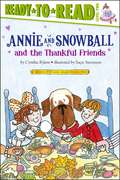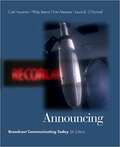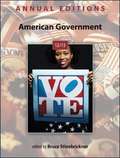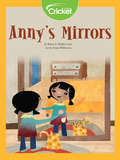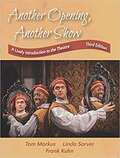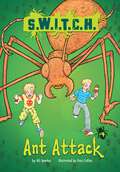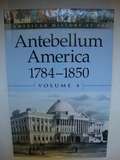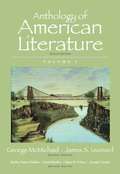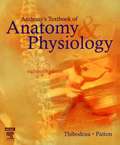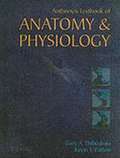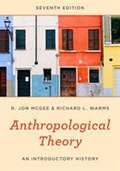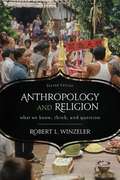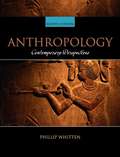- Table View
- List View
Annie Moore: Ellis Island's First Immigrant [On Level, Grade 2]
by Lisa KlobucharNIMAC-sourced textbook
Annie Taylor: Daredevil of Niagara Falls (Fountas & Pinnell Classroom, Guided Reading)
by Alison Blank Fabio LeoneAnnie Taylor was 62 when she decided to go over Niagara Falls in a barrel. No one had ever attempted this dangerous stunt. Would she succeed?
Annie and Snowball and the Thankful Friends
by Cynthia Rylant Suie StevensonIn Annie and Snowball and the Thankful Friends, Annie loves fall and she especially loves Thanksgiving. There is a big table at Annie's house, and she wants lots of people around it for a yummy dinner. But Annie lives with just her dad and her bunny, Snowball. She doesn't have a big family of her own. Who can she invite to share Thanksgiving? In Annie and Snowball and the Wintry Freeze, Annie loves winter. She loves her earmuffs, her hand muff, and her polka-dot boots--all pink, of course. But most of all Annie loves playing in the snow with her cousin Henry and his big dog, Mudge. So when Annie's dad wakes her up with news of a snow day, Annie is excited. She can't wait to go on a wintry adventure with Henry and Mudge!
Announcing: Broadcast Communicating Today (Wadsworth Series In Broadcast And Production)
by Carl Hausman Frank Messere Lewis B. O'Donnell Philip BenoitThis text presents an introduction to the mechanics, tools, and techniques of television and radio announcing. The text's clear and concise writing style and practical approach have been its consistent strengths and selling points.
Annual Editions: American Government 12/13 (42nd Edition)
by Bruce StinebricknerThe Annual Editions series is designed to provide convenient, inexpensive access to a wide range of current articles from some of the most respected magazines, newspapers, and journals published today. Annual Editions are updated on a regular basis through a continuous monitoring of over 300 periodical sources. The articles selected are authored by prominent scholars, researchers, and commentators writing for a general audience. Annual Editions volumes have a number of organizational features designed to make them especially valuable for classroom use: a general introduction; an annotated table of contents; a topic guide; an annotated listing of supporting World Wide Web sites; Learning Outcomes and a brief overview at the beginning of each unit; and a Critical Thinking section at the end of each article. Each volume also offers an online Instructor's Resource Guide with testing materials. Using Annual Editions in the Classroom is a general guide that provides a number of interesting and functional ideas for using Annual Editions readers in the classroom. Visit www.mhhe. com/annualeditions for more details.
Anny's Mirrors
by Nancy E. Walker-GuyeAnny finds mirrors everywhere: in her mother's room, her spoon, her pot, and a puddle!
Another Opening, Another Show: A Lively Introduction To The Theatre
by Tom Markus Linda Sarver Frank KuhnAnother Opening, Another Show derived from the authors asking students what they wanted in an introductory theatre textbook. They've given them exactly that: A book that doesn't cost a lot A book that is fun to read A book that helps them understand and enjoy theatre An insider's look at theatre, not a scholar's critique of it An opportunity to learn about plays on a stage rather than plays on a page Pictures that illustrate the ideas in the text instead of just decorating it Instructors will appreciate the Third Edition's modularity. Each chapter stands on its own, allowing for maximum flexibility for individual course needs. The book's inclusive approach touches on cultural diversity and gender issues in American theatre, as well as adding an entirely new chapter on Asian theatre. Photos of contemporary productions enrich the text, and a variety of side material shows students how the concepts they read about are applied by theatre professionals. Not-for-sale instructor resource material available to college and university faculty only; contact publisher directly.
Another Turn for a Carousel (Fountas & Pinnell Classroom, Guided Reading)
by Diane SilverWhat if something beautiful gets old and broken? Do you forget it? Or do you fix it? Read this story about an old carousel and see what you think.
Ant Attack (S.W.I.T.C.H. #4)
by Ali SparkesDanny and Josh were having a great day until Tarquin, the most annoying boy in the neighborhood, came over to play. He dresses like he's 55, doesn't do anything fun, and pulls the legs off of bugs. The twins thought that their day couldn't get any worse, but when they turn into ants by accident, they realize how wrong they were! Can Danny and Josh find a safe place to hide until they turn human again? And with Tarquin in the garden, will they make it out with all of their legs?
Antararashtriya Arthashastra 1 TYBA Fifth Semester - SPPU: आंतरराष्ट्रीय अर्थशास्त्र 1 टी.वाय.बी.ए. सेमिस्टर ५ - सावित्रीबाई फुले पुणे यूनिवर्सिटी
by Dr D. G. Ushir Prof. G.J. Lomte Prof. S.A. Gaikwad Dr S. G. Sawantसावित्रीबाई फुले पुणे विद्यापीठाने जून 2019 पासून कला व वाणिज्य विद्या शाखांसाठी CBCS पद्धती लागू केली आहे. त्यानुसार पदवी व पदव्युत्तर वर्गाचे अभ्यासक्रम बदलण्यात आले. तृतीय वर्ष कला शाखेसाठी अर्थशास्त्र: Special - III अंतर्गत 'आंतरराष्ट्रीय अर्थशास्त्र' हा विषय निर्धारित करण्यात आला आहे. 'आंतरराष्ट्रीय अर्थशास्त्र १' हा विषय या पूर्वीच्या अभ्यासक्रमात होताच; परंतु नवीन अभ्यासक्रमामध्ये काही जास्तीचे घटक समाविष्ट करण्यात आलेले आहेत. या पुस्तकात सर्व नवीन सिद्धान्त आणि घटकांचे विश्लेषण सविस्तरपणे मांडण्यात आलेले आहे. नेहमीप्रमाणे पुस्तकाची भाषा अत्यंत ओघवती आणि विद्यार्थ्यांना सहजपणे कळेल अशी ठेवण्यात आलेली आहे. सदर पुस्तक सावित्रीबाई फुले पुणे विद्यापीठाच्या अभ्यासक्रमानुसार लिहिलेले असले तरी महाराष्ट्रामधील सर्व विद्यापीठांच्या अर्थशास्त्राचा अभ्यास करणाऱ्या विद्यार्थ्यांसाठी त्याचप्रमाणे स्पर्धा परीक्षांचा अभ्यास करणाऱ्या विद्यार्थ्यांसाठी हे पुस्तक अत्यंत उपयोगी पडेल.
Antararashtriya Arthashastra 2 TYBA Sixth Semester - SPPU: आंतरराष्ट्रीय अर्थशास्त्र 2 टी.वाय.बी.ए. सेमिस्टर ६ - सावित्रीबाई फुले पुणे यूनिवर्सिटी
by Dr D. G. Ushir Dr S. R. Javale Dr S. G. Sawant Dr R. K. Datir Dr S. A. Gaikwadतृतीय वर्ष कला शाखा सत्र - 5 व 6 साठी नेमलेल्या अर्थशास्त्र (विशेष पेपर 3) अंतर्गत ‘आंतरराष्ट्रीय अर्थशास्त्र’ हा विषय निर्धारित करण्यात आला आहे. सत्र 6 साठी नेमलेल्या अभ्यासक्रमानुसार आंतरराष्ट्रीय अर्थशास्त्राचे पुस्तक सर्व दृष्टिकोनातून परिपूर्ण केले आहे. अभ्यासक्रमामध्ये आलेले नवीन सिद्धान्त आणि घटक यांचे सविस्तरपणे विश्लेषण या पुस्तकात मांडण्यात आलेले आहे. नेहमीप्रमाणे पुस्तकाची भाषा अत्यंत ओघवती आणि विद्यार्थ्यांना सहजपणे कळेल अशी ठेवण्यात आलेली आहे. सदर पुस्तक सावित्रीबाई फुले पुणे विद्यापीठाच्या अभ्यासक्रमानुसार लिहिलेले असले तरी महाराष्ट्रामधील सर्व विद्यापीठांच्या अर्थशास्त्राचा अभ्यास करणाऱ्या विद्यार्थ्यांसाठी त्याचप्रमाणे स्पर्धा परीक्षांचा अभ्यास करणाऱ्या विद्यार्थ्यांसाठी हे पुस्तक उपयुक्त आहे.
Antararashtriya Sambandh 1 TYBA Sixth Semester - RTMNU: आंतरराष्ट्रीय संबंध 1 बी.ए. तृतीय वर्ष षष्टम सेमिस्टर - राष्ट्रसंत तुकडोजी महाराज नागपूर विद्यापीठ
by Prof. Shaikh Hashim Dr Jogendra Gawaiराष्ट्रसंत तुकडोजी महाराज नागपूर विद्यापीठाने सन २०१५-१६ च्या शैक्षणिक सत्रापासून बी.ए. राज्यशास्त्राकरिता सेमिस्टर प्रणालीनुसार संशोधित अभ्यासक्रम लागू केला आहे. या क्रमात राज्यशास्त्राच्या बी.ए. तृतीय वर्ष - सेमिस्टर VI च्या अभ्यासक्रमासाठी 'आंतरराष्ट्रीय संबंध' हा विषय निवडला आहे. प्रस्तुत पुस्तकात विद्यापीठ अनुदान आयोगाच्या निर्देशांचे पालन करण्याचा आणि विषयाला पुरेपूर न्याय देण्याचा प्रयत्न केला आहे. आमच्या 'राजकीय सिद्धांत', 'पाश्चात्य राजकीय विचार', 'भारताचे शासन व राजकारण', 'राज्यांचे शासन आणि राजकारण', 'तुलनात्मक शासन आणि राजकारण' या अनुक्रमे पाठ्यपुस्तकामध्ये अभ्यासक्रम दिला आहे. प्रस्तुत पुस्तक अभ्यासल्यानंतर विद्यार्थ्यांना पूर्ण समाधान मिळेल आणि अधिक माहितीसाठी जास्तीची पुस्तके चाळण्याची गरज भासणार नाही यादृष्टीने पुस्तकातील प्रकरणांची मांडणी करण्यात आली आहे. तसेच नवीन परीक्षा प्रणाली अनुसार पुरेसे वस्तुनिष्ठ प्रश्नही यात दिले आहेत.
Antararashtriya Sambandh 2 Paper 4 TYBA Sixth Semester - SPPU: आंतरराष्ट्रीय संबंध 2 पेपर 4 टी.वाय.बी.ए. सेमिस्टर ६ - सावित्रीबाई फुले पुणे यूनिवर्सिटी
by Shekhar Rajendra Sonar Dr Pramod Rajendra Tambeशैक्षणिक वर्ष 2021-2022 च्या बदललेल्या अभ्यासक्रमानुसार तृतीय वर्ष कला शाखेसाठी राज्यशास्त्र विशेष स्तर पेपर-4, सत्र-6, DSE-2D साठी 'आंतरराष्ट्रीय संबंध-II' या विषयाचे अध्ययन केले जाणार आहे. राज्यशास्त्राच्या अभ्यासक्रमामध्ये 'आंतरराष्ट्रीय संबंध 2' या विषयाचा अभ्यास करणे महत्त्वाचे आहे. या अभ्यासक्रमाचा उद्देश म्हणजे आंतरराष्ट्रीय संबंध ही एक विद्याशाखा म्हणून विद्यार्थ्यांना ओळख करून देणे, आंतरराष्ट्रीय संबंधातील विविध संघटनांचा परिचय होणे आणि आंतरराष्ट्रीय संबंधांचे दृष्टिकोन अभ्यासणे हे आहे. सत्र-6 'आंतरराष्ट्रीय संबंध 2' या विषयामध्ये एकूण चार प्रकरणांचा समावेश केला आहे.
Antararashtriya Sambandh Paper 3 TYBA Fifth Semester - SPPU: आंतरराष्ट्रीय संबंध पेपर ३ टी.वाय.बी.ए. सेमिस्टर ५ - सावित्रीबाई फुले पुणे यूनिवर्सिटी
by Prof. Pramod Rajendra Tambe Prof. Shekhar Rajendra Sonarराज्यशास्त्राच्या अभ्यासक्रमामध्ये 'आंतरराष्ट्रीय संबंध' या विषयाचा अभ्यास करणे महत्त्वाचे आहे. या अभ्यासक्रमाचा उद्देश म्हणजे आंतरराष्ट्रीय संबंध ही एक विद्याशाखा म्हणून विद्यार्थ्यांना ओळख करून देणे, आंतरराष्ट्रीय संबंधातील विविध संघटनांचा परिचय होणे आणि आंतरराष्ट्रीय संबंधांचे दृष्टिकोन अभ्यासणे हे आहे. 'आंतरराष्ट्रीय संबंध' या विषयामध्ये एकूण चार प्रकरणांचा समावेश केला आहे. पहिले प्रकरण हे 'आंतरराष्ट्रीय संबंधांचा परिचय' हे असून यामध्ये आंतरराष्ट्रीय संबंधांचे स्वरूप, व्याप्ती, महत्त्व आणि आंतरराष्ट्रीय संबंधांचे विकासाचे टप्पे हे अभ्यासणार आहोत. प्रकरण दोन 'आंतरराष्ट्रीय संबंधांचे दृष्टिकोन' हे आहे. यामध्ये आदर्शवाद, वास्तववाद, व्यवस्था दृष्टिकोन आणि मार्क्सवाद या चार घटकांचा अभ्यास करणार आहोत. प्रकरण तीनमध्ये आपण 'दुसरे जागतिक महायुद्ध आणि शीतयुद्ध' पाहणार आहोत. यात दुसऱ्या महायुद्धाची कारणे आणि परिणाम, शीतयुद्धाचा उदय ' आणि स्वरूप, शीतयुद्धाचा अंत आणि उदयोन्मुख जागतिक व्यवस्था यांचा अभ्यास करणार आहोत. प्रकरण चारमध्ये 'आंतरराष्ट्रीय संघटना' यात आंतरराष्ट्रीय संघटनेचे कार्य आणि आव्हाने, आंतरराष्ट्रीय वित्तीय संस्था यांत जागतिक बँक, आंतरराष्ट्रीय नाणेनिधी आणि आंतरराष्ट्रीय व्यापार संघटना तसेच प्रादेशिक संघटना युरोपियन महासंघ आणि सार्क संघटना यांचा अभ्यास करणार आहोत.
Antarashtriya Vyaparachi Olakh Second Semester FYB.COM New NEP Syllabus - RTMNU: आंतरराष्ट्रीय व्यापाराची ओळख दुसरे सत्र एफ.वाय.बी.कॉम. नवीन एन.इ.पी. अभ्यासक्रम - राष्ट्रसंत तुकडोजी महाराज नागपूर विद्यापीठ
by Dr Sanjay Dhanvijay Atul Kapgateडॉ. संजय धनविजय आणि अतुल कापगते लिखित 'आंतरराष्ट्रीय व्यापाराची ओळख' हे पुस्तक राष्ट्रसंत तुकडोजी महाराज नागपूर विद्यापीठाच्या बी.कॉम. प्रथम वर्षाच्या द्वितीय सत्रासाठी तयार करण्यात आले आहे. नवीन शैक्षणिक धोरण (NEP 2020) नुसार तयार केलेल्या या पुस्तकात आंतरराष्ट्रीय व्यापाराच्या मूलभूत संकल्पना सोप्या आणि सुलभ भाषेत मांडल्या आहेत. पुस्तकाची सुरुवात आंतरराष्ट्रीय व्यापाराची संकल्पना, त्याची वैशिष्ट्ये आणि देशांतर्गत व्यापाराशी तुलना करून होते. आंतरराष्ट्रीय व्यापारात प्रवेश करण्याची कारणे आणि विविध पद्धती यावरही प्रकाश टाकण्यात आला आहे. दुसऱ्या प्रकरणात, जागतिक व्यापार संघटना (WTO), तिची रचना, कार्ये, आणि व्यापार निर्मिती व व्यापार विचलन यासारख्या संकल्पना स्पष्ट केल्या आहेत. तिसऱ्या युनिटमध्ये युरोपियन युनियन (EU), सार्क (SAARC), नाफ्टा (NAFTA), आणि ब्रिक्स (BRICS) यांसारख्या प्रमुख क्षेत्रीय व्यापार करारांची माहिती दिली आहे. शेवटच्या प्रकरणात, जागतिक बँक (World Bank), आंतरराष्ट्रीय नाणेनिधी (IMF), आणि आशियाई विकास बँक (ADB) यांसारख्या आंतरराष्ट्रीय वित्तीय संस्थांच्या भूमिका व कार्यांचे विश्लेषण केले आहे. तसेच, भारतातील आर्थिक सहाय्य योजना, जसे की EPZ आणि SEZ, आणि आंतरराष्ट्रीय व्यवसायातील भविष्यातील ट्रेंड्सवर चर्चा केली आहे. प्रत्येक प्रकरणाच्या शेवटी दिलेला प्रश्नसंग्रह विद्यार्थ्यांना परीक्षेच्या तयारीसाठी अत्यंत उपयुक्त ठरेल.
Antarastriya Sambandagala Saidantika Amshagalu: ಅಂತರಾಷ್ಟೀಯ ಸಂಬಂಧಗಳ ಸೈದಾಂತಿಕ ಅಂಶಗಳು
by Boramma H Angadiಇದು ಅಂತರಾಷ್ಟೀಯ ಸಂಬಂಧಗಳ ಸೈದಾಂತಿಕ ಅಂಶಗಳು DSC 13 NEP ಪಠ್ಯಕ್ರಮದ ಪ್ರಕಾರ BA ಕನ್ನಡ ಮಾಧ್ಯಮದ ವಿದ್ಯಾರ್ಥಿಗಳಿಗೆ ಹಾಗೂ ಸ್ನಾತಕೋತ್ತರ ವಿದ್ಯಾರ್ಥಿಗಳಿಗೆ, ಸ್ಪರ್ಧಾತ್ಮಕ ಪರೀಕ್ಷೆಗಳಿಗೆ ಅಧ್ಯಯನ ಮಾಡಲು ಈ ಪುಸ್ತಕವು ಸಹಾಯಕವಾಗಿದೆ.
Antarastriya Sambandhagala Saiddhantika Aayamagalu (NEP Syllabus): ಅಂತರಸ್ತ್ರಿಯ ಸಂಬಂಧಗಳ ಸೈದ್ಧಾಂತಿಕ ಆಯಮಗಳು (NEP ಪಠ್ಯಕ್ರಮ)
by Ramesh Sankaraddiಇದು ಹೊಸ ಪಠ್ಯಕ್ರಮದಂತೆ ಎಲ್ಲಾ ಕರ್ನಾಟಕ ವಿಶ್ವವಿದ್ಯಾಲಯಗಳ BA 6ನೇ ಸೆಮಿಸ್ಟರ್ ಕನ್ನಡ ಮಾಧ್ಯಮ ವಿದ್ಯಾರ್ಥಿಗಳಿಗಾಗಿ ಶೈಕ್ಷಣಿಕ ಪಠ್ಯಪುಸ್ತಕವಾಗಿದೆ.
Antarctica: A Year of Science
by Jeffrey B. Fuerst Racheal RiceThe continent of Antarctica is a cold and dangerous place, with towering glaciers and deep crevasses. In the summer, temperatures reach highs of only 2 degrees Celsius (36 degrees Fahrenheit), while during the winter, temperatures can reach lows of -60 degrees Celsius (-76 degrees Fahrenheit). Yet every year a few hundred scientists brave the elements to conduct important scientific research. What does it take to make the trip--and survive the winter--in Antarctica? (Set of 6 with Teacher's Guides and Text Evidence Question Card)
Antebellum America: 1784-1850 (American History By Era Series #Volume 4)
by William DudleyThe time between America's independence in 1783 and the year 1850 was an era of remarkable growth in territory and power for the new nation, as well as a time of social ferment and change. <P><P>Americans created a constitutional government, expanded westward, and grappled with the problem of slavery.
Anthology of American Literature, Volume I, Tenth Edition
by George Mcmichael James S. LeonardThis two-volume anthology represents America's literary heritage from colonial times through the American renaissance to the contemporary era of post-modernism. Volume I offers early contextual selections from Christopher Columbus and Gaspar Perez de Villagra, as well as an excerpt from the Iroquois League’s Constitution of the Five Nations, and ends with an extensive selection of the poetry of Emily Dickinson.
Anthony's Textbook of Anatomy & Physiology
by Gary A. Thibodeau Kevin T. PattonThis 17th edition of a text for courses in anatomy and physiology integrates recent discoveries on the genetic basis of body structure and function. The art program includes color dissection photos, light micrographs, and scanning and transmission electron micrographs, some new to this edition. Thibodeau is professor emeritus of biology at the University of Wisconsin; Patton teaches life science at Saint Charles Community College. Annotation (c)2003 Book News, Inc. , Portland, OR (booknews. com)
Anthony's Textbook of Anatomy and Physiology (17th Edition)
by Gary A. Thibodeau Kevin T. PattonThis is a textbook that will help students avoid becoming lost in a maze of facts in a complex learning environment. It will encourage them to explore, to question, and to look for relationships not only between related facts in a single discipline but also between fields of academic inquiry and personal experience.
Anthropological Theory: An Introductory History
by Richard L. Warms R. Jon McGeeAnthropological Theory: An Introductory History, Seventh Edition, presents a selection of critical essays in anthropology from 1860 to the present day. Classic authors such as Marx, Durkheim, Boas, Radcliffe-Brown, Benedict, Rappaport, Geertz, and Turner are joined by contemporary thinkers including Das, Ortner, Kwiatkowski, and Mattingly. Detailed introductions examine critical developments in theory, introduce key people, and discuss historical and personal influences on theorists. In extensive footnotes, the editors provide commentary that puts the writing in historical and cultural context, defines unusual terms, translates non-English phrases, identifies references to other scholars and their works, and offers paraphrases and summaries of complex passages. The notes identify and provide background information on hundreds of scholars and concepts important in the development of anthropology. This makes the essays more accessible to both students and current day scholars. An extensive index makes this book an invaluable reference tool.
Anthropology and Religion
by Robert L. WinzelerDrawing from ethnographic examples found throughout the world, this revised and updated text offers an introduction to what anthropologists know or think about religion, how they have studied it, and how they have interpreted or explained it since the late nineteenth century. Robert Winzeler's balanced consideration of classic topics, basic concepts, and new developments in the anthropological study of religion moves beyond cultural anthropology and ethnography to gather information from physical anthropology, prehistory, and archaeology. Written as a sophisticated but accessible treatment of the issues, Anthropology and Religion is a key text for upper-division courses.
Anthropology: Contemporary Perspectives
by Phillip WhittenThis collection of short readings on all aspects of anthropology conveys the excitement and relevance of contemporary anthropology. This book organizes readings around the major subdisciplines within anthropology: biological anthropology, cultural anthropology, archaeology, and language and communication, making it easy to notice trends and themes. For anyone with an interest in anthropology.

